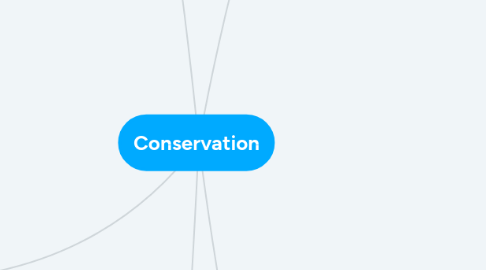
1. Sustainable Development
1.1. Is providing for the needs of an increasing human population without harming the enviroment.
1.1.1. By
1.1.1.1. Conserving Forest
1.1.1.1.1. How
1.1.1.2. Conserving Fish Stocks
1.1.1.2.1. How
2. Endangered Species
2.1. A species whose numbers have fallen so low that it is at risk of becoming extinct. Once a species has become extinct, it is gone forever.
2.1.1. Causes
2.1.1.1. Habitat Destruction
2.1.1.1.1. Human activities can destroy habitats. Species with no habitat cannot survive.
2.1.1.2. Hunting
2.1.1.2.1. Hunting can be so severe that it can destroy an entire species.
2.1.1.3. Pollution
2.1.1.3.1. Pollution causes climate change. As temperatures rises on Earth, organisms with adaptation that allow them to live in a particular enviroment may no longer be so well adapted.
2.1.1.4. Introduced Species
2.1.1.4.1. New species that are introduces by humans into an ecosystem can threaten the existence of native species
2.1.2. The Conservation
2.1.2.1. Reasons
2.1.2.1.1. Genetic variation is very important to a population. With genetic variations, the population as a whole has a better chance of surviving if they are threatened by a pathogen, or habitat changes. Even if only some of the individuals may have the variations that allow them to survive and reproduce.
2.1.2.2. How
2.1.2.2.1. Monitoring and protecting the species in its natural habitats.
2.1.2.2.2. Using captive breeding programmes.
2.1.2.2.3. Educating local people about the importance of conservation, and what they can do to help.
3. Reasons for Conservation Programmes
3.1. We need to keep the Earth safe so that the future generations can enjoy them.
3.2. If we damage the ecosystem, we can be doing harm to ourselves.
3.3. Taking care of the enviroment helps to make our own living conditions more pleasant and safe.
3.4. Losing species from an ecosystem can have a wide reaching effects.
3.5. Many plants species containing chemicals that can be used as drugs. If we lose plant species, we may be losing potential new medicines.
4. of the enviroment
4.1. The process of looking after natural enviroment. Attempts to maintain or increase the biodiversity in one area.
4.1.1. Damage
4.1.1.1. Air Pollution
4.1.1.1.1. Global Warming
4.1.1.1.2. Acid Rain
4.1.1.2. Habitat Destruction
4.1.1.2.1. Deforestation
4.1.1.2.2. Loss of Wetlands
4.1.1.3. Water Pollution
4.1.1.3.1. Toxic Chemicals
4.1.1.3.2. Eutrophication
4.1.1.3.3. Oil Spills
4.1.1.4. Species Destruction
4.1.1.4.1. Damage from Fishing
4.1.1.4.2. Damages from Pesticides
4.1.1.4.3. Loss of Habitat
5. Resources
5.1. Sustainable
5.1.1. Resources which can be removed from the enviroment without it running out.
5.1.1.1. Example
5.1.1.1.1. Fish in the sea, as long as we don't take so many that their population fall to dangerously low level.
5.1.1.1.2. Wood for fuel could be a sustainable resource, so long as we replant trees to replace the ones we cut down, or make sure that plenty of young trees are allowed to naturally grow.
5.2. Non-sustainable
5.2.1. Resources obtained from natural resources collected up to millions of years. Ex, fossil fuels.
5.2.1.1. How to Conserve
5.2.1.1.1. By

